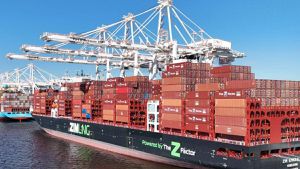The Boeing Starliner astronauts are currently facing an uncertainty-filled wait, stranded aboard the International Space Station (ISS) following a series of technical setbacks. Astronauts Butch Wilmore and Suni Williams launched aboard the CST-100 Starliner on June 5, 2024, intending to undertake a week-long mission. However, unforeseen issues, including thruster failures and helium leaks, have led to an extended stay that has surpassed 50 days.
NASA originally anticipated their return shortly after the mission began, but various malfunctions quickly shifted those plans. As the astronauts approach their 50th day in orbit, the space agency has expressed that there is still no fixed timetable for their return home, with officials keen on ensuring safety before setting a new departure date.
"We’ll come home when we’re ready," stated Steve Stich, NASA’s Commercial Crew Program manager. He acknowledged that the team is considering alternative options, including potentially using a different spacecraft if the Starliner continues to face challenges.
This mission represents a vital test for Boeing's Starliner capsule, developed under NASA's Commercial Crew Program, designed to provide reliable transport for astronauts to low Earth orbit following the retirement of the shuttle program in 2011. In contrast, SpaceX's Crew Dragon has already completed 13 crewed flights successfully since it first took flight in 2020, heightening scrutiny on Boeing as it strives to rectify its ongoing problems.
Prior to liftoff, Boeing discovered helium leaks, yet they opted to proceed with the launch. The spacecraft has since experienced multiple additional leaks and significant failures in its thruster system, central to maneuvering and positioning the spacecraft for descent. Following an extended investigation, NASA engineers deduced that the ship needed more time to assess the problems and gather crucial data before attempting a return.
As a contingency mindset prevails, both NASA and Boeing have been thoroughly investigating the thruster issues back on Earth. Engineers in New Mexico have been dissecting spare thrusters, conducting tests to understand the malfunction characteristics and how they affect the 'return home' sequence. Meanwhile, the astronauts themselves have been involved in maintenance tasks aboard the ISS, contributing to scientific investigations while waiting for news on their return.
When they do come back, a safe descent will require smoothly executing a controlled re-entry, a process that must account for the previously noted thruster failures and oxygen leaks. Although NASA maintains that the Starliner is still safe, the stakes are undeniably high. There are formidable implications not only for the current astronauts but also for the future of Boeing's contract with NASA, under which they are committed to multiple crewed missions.
The spacecraft boasts advanced technology designed to handle piloting and critical moments in its flight path independently, but the series of malfunctions since its initial launch starkly highlights the challenges inherent in aerospace engineering. Both companies continue to stress the importance of astronaut safety in every decision, but, as both media and critics ask difficult questions, the pressure is mounting.
As the world closely monitors this unfolding situation, the extended wait for Wilmore and Williams raises questions about the thoroughness and transparency of NASA's protocols and the responsibilities of contracting private entities like Boeing. Elon Musk’s SpaceX continues to demonstrate a markedly different performance profile with its Crew Dragon missions providing reliable service since launching its first astronaut mission.
The ongoing issues with Starliner illustrate a larger narrative about the intersecting realms of public safety, corporate accountability, and the relentless pace of technological advancement, exacerbated when human lives hang in the balance.
As the mission progresses without a clear resolution in sight, stakeholders, including other private aerospace firms, will likely keep their eyes on Boeing's next moves. Failure to return the stranded astronauts safely to Earth could alter the landscape of NASA's Commercial Crew Program significantly.
In the end, for astronauts exploring the frontiers of space, the challenges brought on by technical complications serve as a sobering reminder of the risks that accompany humanity’s ambition to reach beyond our planet.
As NASA strategizes the best approach for a safe return, the transfer of knowledge and learnings from this mission will likely inform future designs, operations, and perhaps offer guidance to other corporations looking to become players in the space race.



